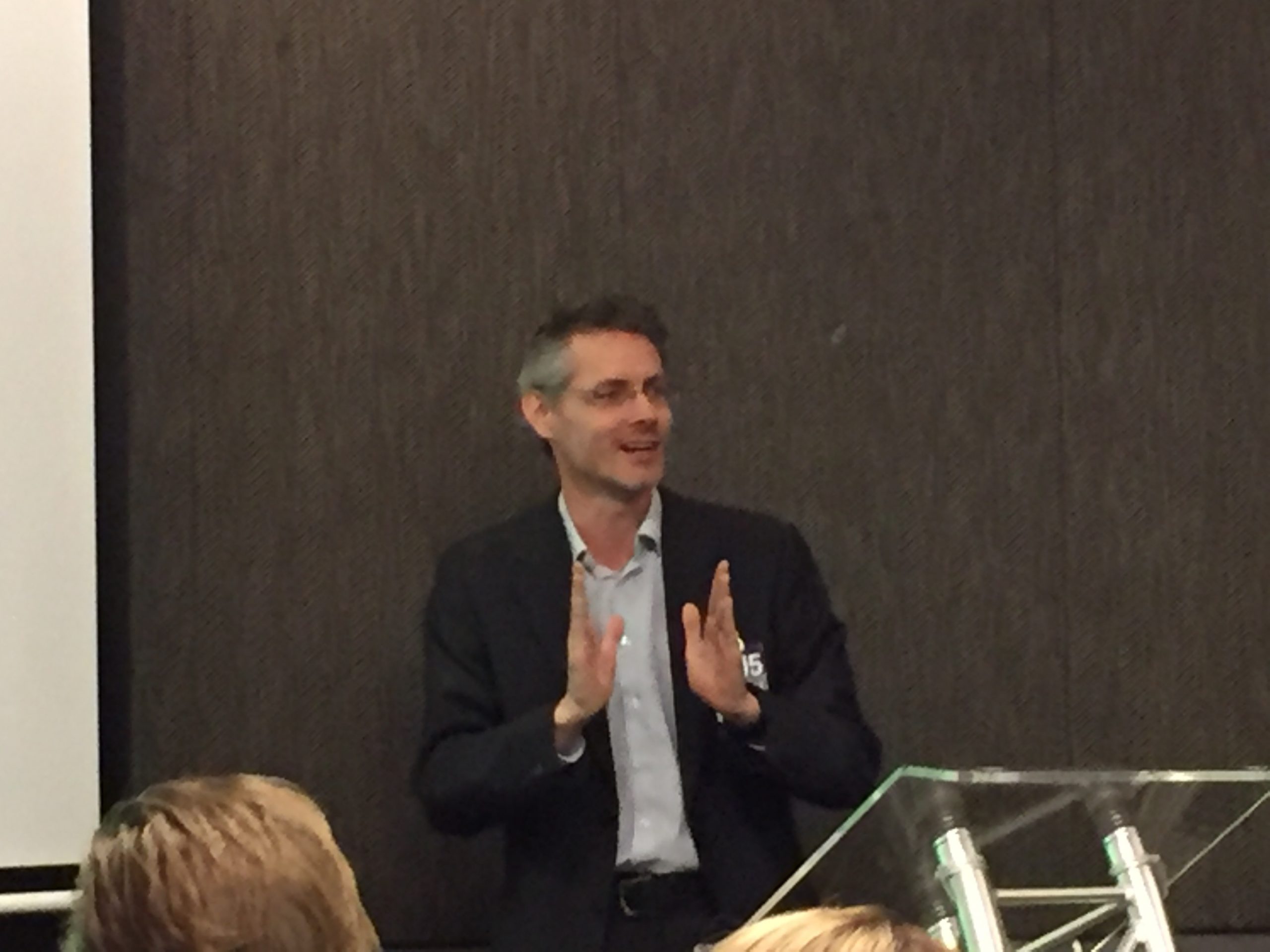James Cridland has worked in radio since 1989 in various roles – copywriter, presenter, and internet stategist. He also launched one of the first radio smart phone apps in 2005. He now works as a radio futurologist and is discussing the future of radio at the National Radio Conference in a standing room only workshop.
“There are lots of people who are eager to say that radio is dying,” says Cridland. But it’s a fact that in traditional radio countries (UK, Europe, USA, Australia) 9 out of 10 people tune into radio each week. As a global traveller, Cridland has come across great radio ideas and stories from around the world that support this statistic.
“The way we listen to radio is changing,” continues Cridland. “One of the most interesting facts comes from India, where 94% of people liste to radio on their smart phones through activated FM chips.”
Pop-up radio stations are now emerging around the world, where stations are available for only a short time dedicated to a specific event. A great example was a pop-up station in South Africa that was launched to cover the Oscar Pistorius trial then ended up broadcasting for 9 months.
Absolute Radio in the UK launched a range of digital stations in addition to their main channel, giving people an opportunity to move across to brands that might fit them better. They also implemented a great piece of technology which allowed them to broadcast their breakfast show (Christian O’Connell) onto all digital stations, and nclude the stations unique music around the show. This meant the audience could hear their favourite songs, but still hear the stations key breakfast show. As a result, time spent listening increased.
“Where I think things will go, the playout, processing and encoding will take place in your mobile phone or device,” says Cridland.
This leads into another great idea from the US. NPR (National Public Radio) has launched an app which allows people to consume content that the app (based on previous data and algorithms) thinks you will like. It’s very similar to the technology that Australian company launched a few years ago. NPR has introduced this technology, and the result is that people are spending double the time spent listening through their mobile devices.
“Podcasting and on-demand content is important in the whole scheme of things. It’s about taking live radio content and making some great on demand content,” says Cridland.
LBC (Leading Britains Conversation) is a talk station in the UK that has extended content to the visual medium by setting up a studio containing state of the art television cameras, and technology that allows the cameras to switch between shots of whoever is speaking, making sure it’s not labour intensive.
What is the future of radio?
“I think the future is a good future”, says Cridland. “But i think the future is bright for stations that have great content.”
– Don’t believe the doomsayers: radio continues to be in great shape
– The way we tune into radio is changing: this gives opportunities for broadcasters.
– The way we make radio is changing: time to rethink how we make radio to best exploit all platforms, not just FM, DAB+
– Post-produced radio visualisation works well; think about cameras for radio studios and video-capable playout systems

